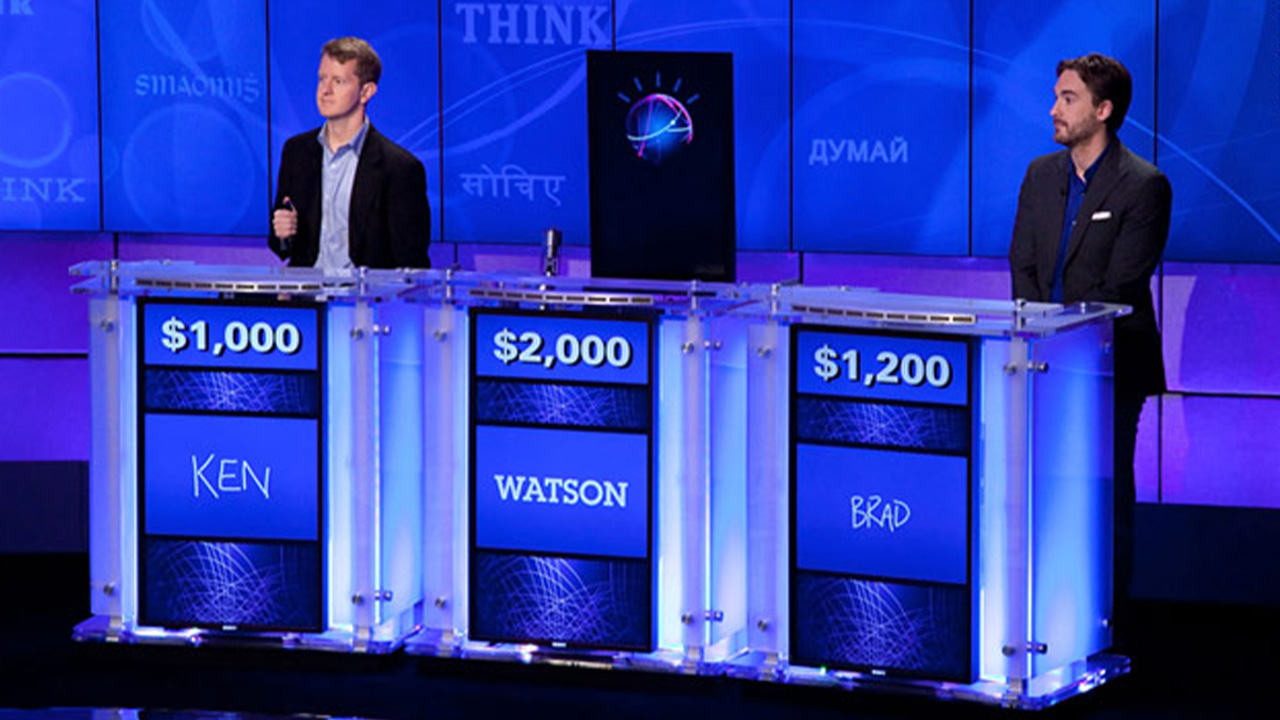Table of Contents
Chapter 4: Overview
This release summarizes the fourth chapter of Alok Aggarwal’s new book, “The Fourth Industrial Revolution & 100 Years of AI (1950-2050).” This chapter, “Domains in Which Artificial Intelligence is Rivaling Humans: 2011-2023”, examines the commencement of the Fourth Industrial Revolution with AI and Data Science taking center stage.

In a groundbreaking moment for artificial intelligence (AI), IBM’s supercomputer, Watson, made history in February 2011 by competing in a three-game match on the iconic TV game show Jeopardy! against top contestants Brad Rutter and Ken Jennings. This triumph marked a turning point for AI researchers, symbolizing the culmination of decades of dedication and hard work. This success was not only a vindication for IBM researchers but for the entire AI community, dispelling the stigma of being labeled “wide-eyed dreamers.” The era following 2011 witnessed a convergence of AI science and engineering with other disciplines, leading to the development of systems that rivaled or even surpassed human capabilities across various domains.
Key Topics Discussed in the Chapter
1. Widespread commercial use of AI systems only started after 2011: It took almost five decades after the scientific revolution in AI before it began to be commercially exploited. This is reminiscent of the first industrial revolution that started in 1760, which occurred seven decades after the Copernican-Galileo-Newtonian revolution.
2. Various kinds of Deep Learning Networks began to be used extensively: Several variants of Deep Learning Networks, particularly, Convolutional Neural Networks, Recurrent Neural Networks, Long Short Term Memory Networks, and Autoencoders, which were developed during 1980-2010, surged extraordinarily after Alexnet won a challenge related to Computer Vision in 2012.
3. Two new categories of DLNs were introduced for creating synthetic data: Both Generative Adversarial Networks (GANs) and Diffusion Models were created during 2014 and 2018 and they improved many use cases related to image super resolution and inpainting, video generation, and text-to-image generation.
4. Another kind of DLNs called Transformers surged spectacularly: In 2017, Transformers were invented as another variant of Deep Learning Networks, and these have provided remarkable enhancements for solutions related to natural language processing and computer vision. These Transformers are currently the rage because they can be used for solving several problems with around 90% accuracy. Some of the important use cases for Transformers (with one of its subcategories called Large Language Models or LLMs) include sentiment analysis, semantic parsing, summarization of articles, assembling research from various sources, providing preliminary content (on a specific topic), writing a preliminary version of computer code, and composing emails, articles, chat messages, and other documents (such as recommendation letters) in real time.
5. Long term impacts of Transformers and their variants: Our analysis shows that by 2050, Transformers and their variants will be able to improve the efficiency of knowledge workers by 8%-10% worldwide. However, several market research and consulting firms have hyped their utility to a level that is unlikely to be achieved, at least during the next 5-7 years.
6. Other kinds of DLNs are likely to be created soon that will improve accuracy: Given the proliferation and expansive use of various kinds of DLNs and their embellishments during the last decade, it is almost certain that we will see many more variants during the next ten years. These will most likely include several hundred open-source Transformers as well as those that are licensed. Indeed, some Transformers will be created for excelling in specific tasks and for limited domains (e.g., investment banking). Furthermore, just like Transformers, GANs, and Diffusion Models are spectacular feats of engineering, the field of AI may witness other categories of DLNs that are equally ingenious and perhaps combine current categories of DLNs to achieve new superior categories, e.g., they may combine Transformers and Reinforcement Learning networks in novel ways.
Conclusion
Overall, the book, “The Fourth Industrial Revolution & 100 Years of AI (1950-2050)” provides a concise yet comprehensive exploration of AI, covering its origins, evolutionary trajectory, and its potential ubiquity during the next 27 years. Beginning with an introduction to the fundamental concepts of AI, subsequent chapters delve into its transformative journey with an in-depth analysis of achievements of AI, with a special focus on the potential for job loss and gain. The latter portions of the book examine the limitations of AI, the pivotal role of data in enabling accurate AI systems, and the concept of “good” AI systems. It concludes by contemplating the future of AI, addressing the limitations of classical computing, and exploring alternative technologies (such as Quantum. Photonics, Graphene, and Neuromorphic computing) for ongoing advancements in the field. This book is now available in bookstores and online retailers in Kindle, paperback, and hardcover formats.